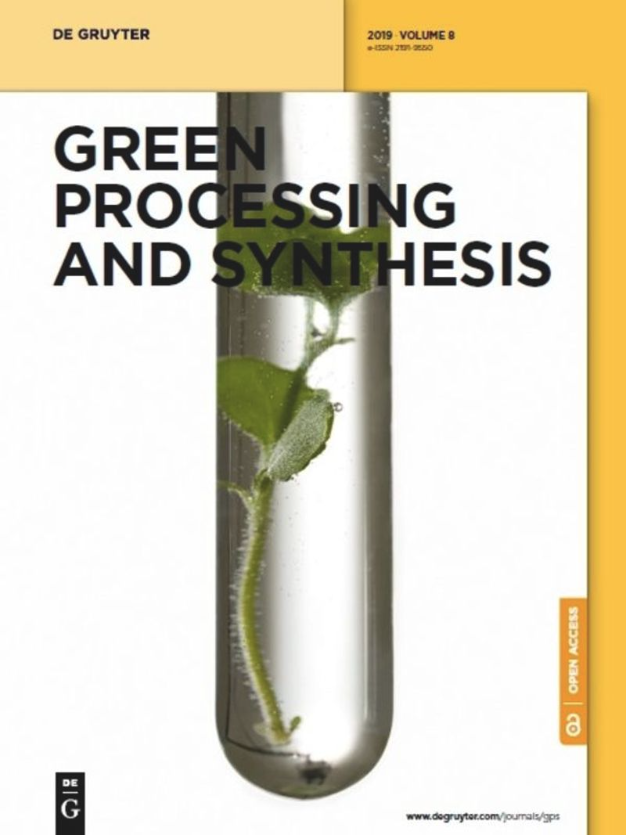柚皮苷纳米颗粒减轻邻苯二甲酸二(2-乙基己基)酯诱导的大鼠肝肾毒性
IF 3
4区 工程技术
Q2 CHEMISTRY, MULTIDISCIPLINARY
引用次数: 0
摘要
摘要本研究评估了柑橘黄烷酮、柚皮苷及其纳米制剂对白化大鼠邻苯二甲酸二(2-乙基己基)酯(DEHP)毒性的保护作用。以绿色纳米技术为基石,利用电子显微镜(透射电子显微镜和扫描电子显微镜)、粒度分布、傅立叶变换红外光谱和X射线衍射合成并表征了Nar的纳米颗粒。合成的纳米颗粒主要是球形的,平均尺寸为109 nm和0.175的低多分散性指数。使用成年雄性白化大鼠进行暴露研究。第一组为阴性对照组。第II、III和IV组暴露于(250 mg·kg b·wt−1)DEHP作用3周。第III组用散装Nar(5 mg·kg b·wt−1),IV组用非柚皮苷(NNar)处理(5 mg·kg b·wt−1)。V组仅暴露于NNar。暴露于DEHP显著提高了血清促炎细胞因子、白细胞介素-1β、6、8(IL-1β、IL-6、IL-8)和肿瘤坏死因子(TNF-α)的水平。此外,还观察到核因子红系2相关因子2的肝mRNA表达受到抑制。此外,在肝脏和肾脏组织中观察到明显的组织病理学改变。Nar和NNar治疗显著减轻了DEHP诱导的氧化应激/炎症反应以及相关的组织学改变。然而,NNar的治疗效用更为深远,突显了其在具有高绿色证书的营养疗法中的潜力。柚皮苷及其纳米颗粒对大鼠DEHP毒性的影响。本文章由计算机程序翻译,如有差异,请以英文原文为准。
Attenuation of di(2-ethylhexyl)phthalate-induced hepatic and renal toxicity by naringin nanoparticles in a rat model
Abstract This study assessed the protective effect of citrus flavanone, naringin (Nar), and its nanoformulation against di(2-ethylhexyl)phthalate (DEHP) toxicity in albino rats. Keeping green nanotechnology as the cornerstone, nanoparticles of Nar were synthesized and characterized using electron microscopy (transmission electron microscopy and scanning electron microscopy), particle size distribution, Fourier transform infrared spectroscopy, and X-ray diffraction. The synthesized nanoparticles were primarily spherical with an average size of 109 nm and a low polydispersity index of 0.175. Mature male albino rats were used for the exposure study. Group I was negative control. Groups II, III, and IV were exposed to (250 mg·kg b·wt−1) DEHP for 3 weeks. Group III was treated with bulk Nar (5 mg·kg b·wt−1), and group IV was treated with non-naringin (NNar) (5 mg·kg b·wt−1). Group V was exposed only to NNar. Exposure to DEHP significantly enhanced serum levels of pro-inflammatory cytokines, interleukin-1β, 6, 8 (IL-1β, IL-6, IL-8), and tumour necrosis factor (TNF-α). In addition, the repression of hepatic mRNA expression of nuclear factor-erythroid 2-related factor 2 was also observed. In addition, marked histopathological alterations were observed in the hepatic and renal tissues. Treatment with both Nar and NNar significantly alleviated the DEHP-induced oxidative stress/inflammatory response along with the associated histological alterations. However, therapeutic utility of NNar was more profound underlining its potential in nutraceutical therapeutics with high green credentials. Graphical abstract Effect of naringin and its nanoparticles against DEHP toxicity in a rat.
求助全文
通过发布文献求助,成功后即可免费获取论文全文。
去求助
来源期刊

Green Processing and Synthesis
CHEMISTRY, MULTIDISCIPLINARY-ENGINEERING, CHEMICAL
CiteScore
6.70
自引率
9.30%
发文量
78
审稿时长
7 weeks
期刊介绍:
Green Processing and Synthesis is a bimonthly, peer-reviewed journal that provides up-to-date research both on fundamental as well as applied aspects of innovative green process development and chemical synthesis, giving an appropriate share to industrial views. The contributions are cutting edge, high-impact, authoritative, and provide both pros and cons of potential technologies. Green Processing and Synthesis provides a platform for scientists and engineers, especially chemists and chemical engineers, but is also open for interdisciplinary research from other areas such as physics, materials science, or catalysis.
 求助内容:
求助内容: 应助结果提醒方式:
应助结果提醒方式:


